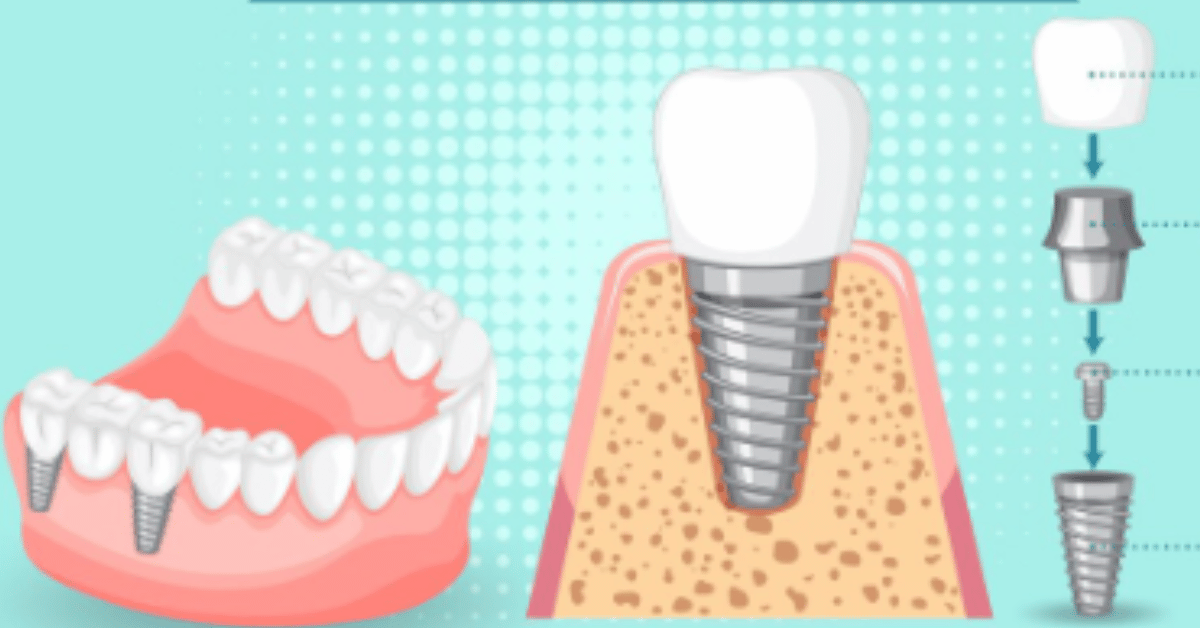Screw in teeth, often referred to as dental implants, have transformed modern dentistry by offering patients a permanent and natural-looking solution for missing teeth. Unlike removable dentures or temporary fixes, screw in teeth are surgically anchored into the jawbone, creating stability and functionality that closely resembles natural teeth. For many, the appeal lies not only in the aesthetics but also in the confidence to speak, chew, and smile without hesitation. Within the first appointment, patients usually want to know what the procedure involves, how long it lasts, whether it is painful, and what costs might be associated. This guide provides a thorough explanation of screw in teeth, breaking down the step-by-step process, benefits, long-term expectations, maintenance, and comparisons to alternative treatments. The goal is to offer clarity for anyone considering this option so they can make informed decisions. As one dentist once remarked, “A smile restored is a confidence renewed.” That is the essence of screw in teeth, not just medical treatment but life transformation.
What Are Screw in Teeth?
Screw in teeth are prosthetic replacements for natural teeth that are fixed into the jaw using titanium or zirconia screws. These screws act as artificial roots that fuse with bone tissue in a process known as osseointegration. Once healed, crowns, bridges, or full arch prosthetics can be attached to the screws, resulting in a strong, long-lasting solution. Unlike dentures that may slip or require adhesives, screw in teeth remain secure and stable, even under daily wear. They also help prevent bone loss, which commonly occurs when natural teeth are missing for extended periods. The technology behind screw in teeth has evolved dramatically in the last three decades, making them more predictable, safer, and customizable to individual needs. Patients today benefit from advanced 3D imaging, guided surgery, and high-quality materials that allow implants to look indistinguishable from natural teeth.
The Procedure: Step by Step
Getting screw in teeth is not a single-day decision but a carefully planned medical process that unfolds in stages. It begins with an initial consultation, where the dentist evaluates bone health using X-rays or scans. If the jawbone lacks density, bone grafting may be recommended before implant placement. Once cleared, the surgical phase involves placing the screw directly into the bone under local anesthesia. After this, the healing period, which can last several months, allows the implant to fuse securely with the bone. During this time, temporary teeth may be fitted for function and aesthetics. The final stage is attaching the permanent crown or prosthetic, designed to match the color, shape, and size of natural teeth. “Patience during the healing stage is rewarded with a lifetime of comfort,” as one oral surgeon explained, emphasizing the long-term outlook over immediate results.
Benefits of Screw in Teeth
The benefits extend far beyond simply filling a gap in the mouth. First, they restore natural chewing ability, allowing patients to enjoy a wide variety of foods without fear. Second, they protect facial structure by preventing the jawbone from deteriorating. Third, they improve speech clarity, especially for those who previously struggled with dentures. Fourth, the psychological impact of renewed confidence cannot be overstated. Patients report higher self-esteem, improved social interactions, and reduced self-consciousness. Additionally, screw in teeth are remarkably durable, with many lasting 20 years or more when properly maintained. Unlike bridges, they do not require grinding down adjacent teeth, which helps preserve overall dental health. In essence, screw in teeth combine functionality, health benefits, and emotional well-being, making them a holistic dental solution.
Risks and Considerations
Although screw in teeth offer numerous advantages, it is important to acknowledge risks and considerations. Infection at the implant site, nerve damage, or sinus complications are rare but possible. Poor bone quality or uncontrolled conditions such as diabetes may also complicate outcomes. Smoking is another significant factor that can reduce implant success rates. Financial cost remains a challenge for many patients since screw in teeth are generally more expensive upfront compared to alternatives. Time commitment is another consideration, as healing and osseointegration can take several months. However, for most candidates, these risks are outweighed by the long-term stability and quality of life improvements. Dentists usually recommend a thorough pre-screening process to minimize complications. A thoughtful quote by a leading implant specialist captures it well: “Implants succeed when preparation meets patience.”
Table 1: Comparison of Tooth Replacement Options
| Feature | Screw in Teeth (Implants) | Bridges | Removable Dentures |
|---|---|---|---|
| Stability | Very High | Moderate | Low |
| Longevity | 20+ years | 10–15 years | 5–7 years |
| Bone Preservation | Yes | Limited | No |
| Aesthetic Quality | Natural Appearance | Good | Variable |
| Cost | High | Moderate | Low |
| Comfort | Excellent | Good | Often Uncomfortable |
Materials Used in Screw in Teeth
The materials behind screw in teeth are as critical as the procedure itself. Titanium has long been the gold standard due to its strength, biocompatibility, and ability to fuse seamlessly with bone. Recently, zirconia implants have emerged as a metal-free alternative, offering aesthetic advantages for patients concerned about gum line appearance. The crowns attached to implants are typically made from porcelain or ceramic, chosen for their natural look and durability. Some advanced prosthetics use hybrid designs that combine ceramic surfaces with metal frameworks for added resilience. These material choices are often customized to patient needs, considering factors such as allergies, gum thickness, and smile design. By selecting the right combination, dentists ensure that screw in teeth not only perform well but also meet personal expectations of beauty and comfort.
Healing and Recovery
Recovery after screw in teeth placement requires both patience and proper care. Immediately following surgery, patients may experience swelling, mild pain, or minor bleeding, which usually subsides within a few days. Pain medication and antibiotics are often prescribed to aid recovery. The crucial phase, however, is the osseointegration period, where the bone grows around the implant screw. This healing typically lasts three to six months, depending on individual health and bone density. During this time, patients are advised to follow a soft food diet and maintain excellent oral hygiene. Regular check-ups ensure that healing is progressing as expected. Once fully integrated, the implant becomes as stable as a natural tooth root, allowing the dentist to fit the final crown.
Maintenance of Screw in Teeth
Screw in teeth require ongoing care, though not much different from natural teeth. Daily brushing, flossing, and rinsing with antimicrobial mouthwash help prevent plaque buildup. Regular dental visits, ideally every six months, are crucial to monitor implant health. Unlike dentures, implants do not need removal or special cleaning solutions, but neglect can still lead to gum disease or peri-implantitis. Special floss or interdental brushes may be recommended for cleaning around implants. With proper care, screw in teeth can last decades without issue. Many patients appreciate that they can maintain their implants with the same routine used for natural teeth, making them both practical and sustainable.
Cost Analysis of Screw in Teeth
One of the biggest questions patients have is cost. Screw in teeth are generally more expensive than traditional solutions, but the expense reflects the complexity, materials, and longevity of the treatment. A single implant may range widely in cost depending on country, dentist expertise, and the need for additional procedures like bone grafting. However, when compared to repeated replacements of bridges or dentures, implants often prove more economical in the long term. Dental financing options and insurance coverage may help make treatment more accessible. The cost should not only be seen as an expense but as an investment in long-term health, comfort, and quality of life.
Table 2: Cost vs Longevity Comparison
| Option | Average Cost | Average Lifespan | Long-Term Value |
|---|---|---|---|
| Screw in Teeth | High | 20+ years | Excellent |
| Bridges | Moderate | 10–15 years | Good |
| Dentures | Low | 5–7 years | Fair |
Future of Screw in Teeth
The future of screw in teeth is poised to become even more innovative. Advances in 3D printing now allow custom implant design, improving precision and reducing surgery time. Digital scanners provide detailed impressions without uncomfortable molds, while guided robotic surgery ensures greater accuracy. Researchers are also exploring bioactive coatings on implants to accelerate healing and reduce complications. Furthermore, regenerative dentistry is investigating stem cell technology to grow natural bone and tissue around implants. These innovations may make screw in teeth faster, more affordable, and accessible to a broader population. For patients, this means a future where dental implants are not just a premium option but a standard of care.
Conclusion
Screw in teeth represent one of the most remarkable achievements in modern dentistry, merging science, technology, and artistry to restore smiles. They offer unmatched stability, longevity, and natural aesthetics compared to traditional alternatives. While the cost and recovery period may appear challenging, the long-term benefits in confidence, functionality, and oral health make them an invaluable investment. For patients weighing their options, understanding the procedure, materials, maintenance, and potential risks is essential to making an informed decision. As one patient shared after her implant journey, “I didn’t just get new teeth; I got a new life.” Ultimately, screw in teeth are not simply about restoring dental function but about giving individuals the freedom to smile without restraint and live with renewed self-assurance.
FAQs
Q1. Are screw in teeth suitable for everyone?
Not every patient is an ideal candidate for screw in teeth. Suitability depends on bone density, gum health, and overall medical conditions. Patients with uncontrolled diabetes, severe bone loss, or heavy smoking habits may face reduced success rates. Dentists usually perform a thorough evaluation with imaging scans to determine candidacy, and in some cases, preparatory treatments such as bone grafting or sinus lifts can make implants possible.
Q2. How long does the screw in teeth procedure typically take from start to finish?
The full timeline can vary depending on individual healing. The surgical placement itself may take only one to two hours, but the overall process—from consultation to permanent crown—often spans three to six months. This is because osseointegration, the fusion of bone and implant, requires sufficient healing time. For some patients with strong bone structure, same-day implants may be an option.
Q3. What is the success rate of screw in teeth implants?
Modern dental implants have a high success rate, typically ranging between 95–98 percent. Success depends on careful planning, surgical expertise, and patient compliance with aftercare. Long-term outcomes are significantly improved when patients maintain good oral hygiene and attend regular dental check-ups. Factors like smoking, chronic illnesses, or poor oral care can reduce the success rate.
Q4. How do screw in teeth compare to traditional dentures in the long run?
Screw in teeth offer far greater stability and longevity than traditional dentures. While dentures typically need replacement every 5–7 years, screw in teeth can last 20 years or more with proper care. They also prevent bone loss, which dentures cannot. Though the upfront cost is higher, the long-term investment often proves more economical due to fewer replacements and improved quality of life.
Q5. Do screw in teeth require special maintenance compared to natural teeth?
Screw in teeth require very similar care routines to natural teeth: regular brushing, flossing, and professional cleanings. However, patients should pay close attention to the gum area surrounding implants, as inflammation or peri-implantitis can compromise stability. Specialized floss, interdental brushes, or water flossers may be recommended for thorough cleaning. Consistent dental check-ups are vital for ensuring implant health and longevity.











